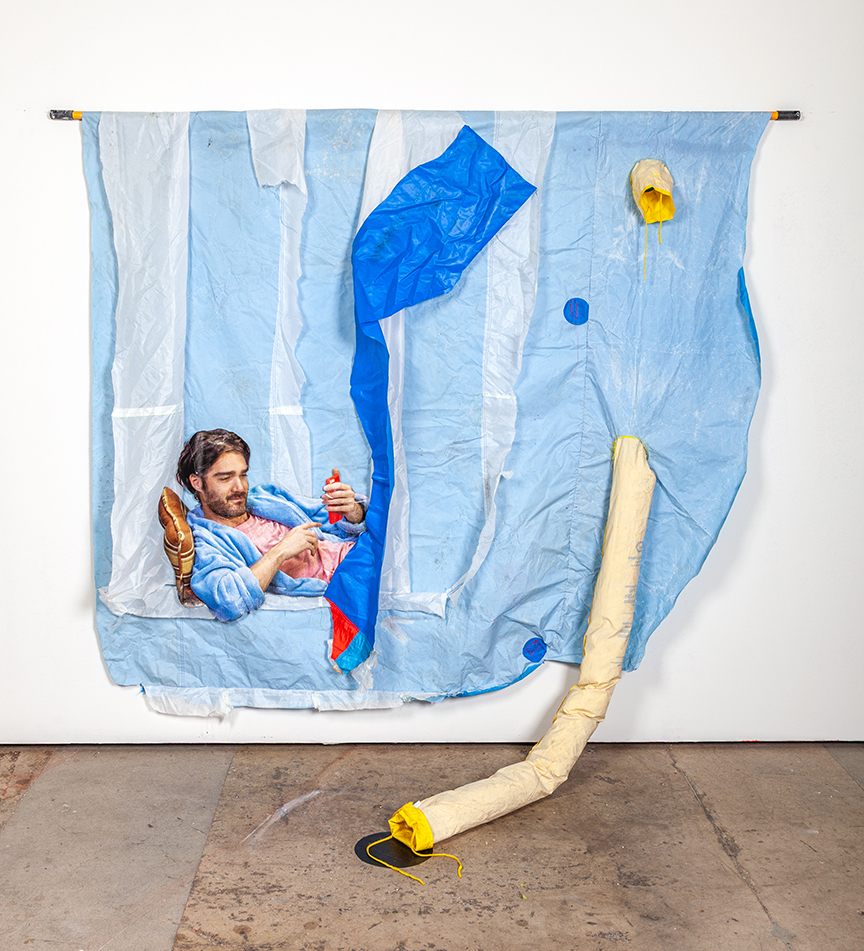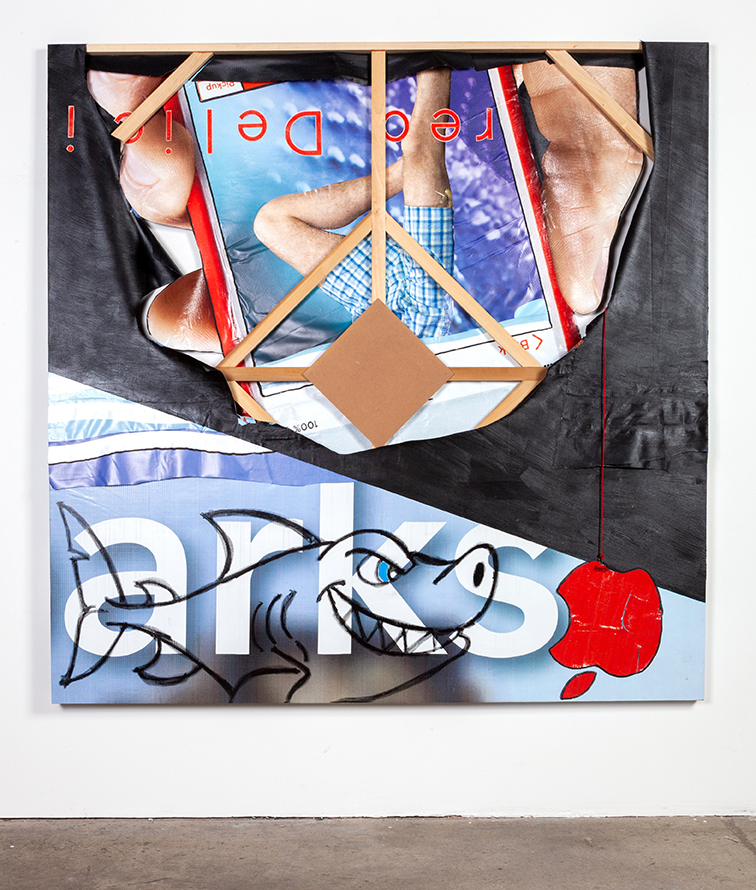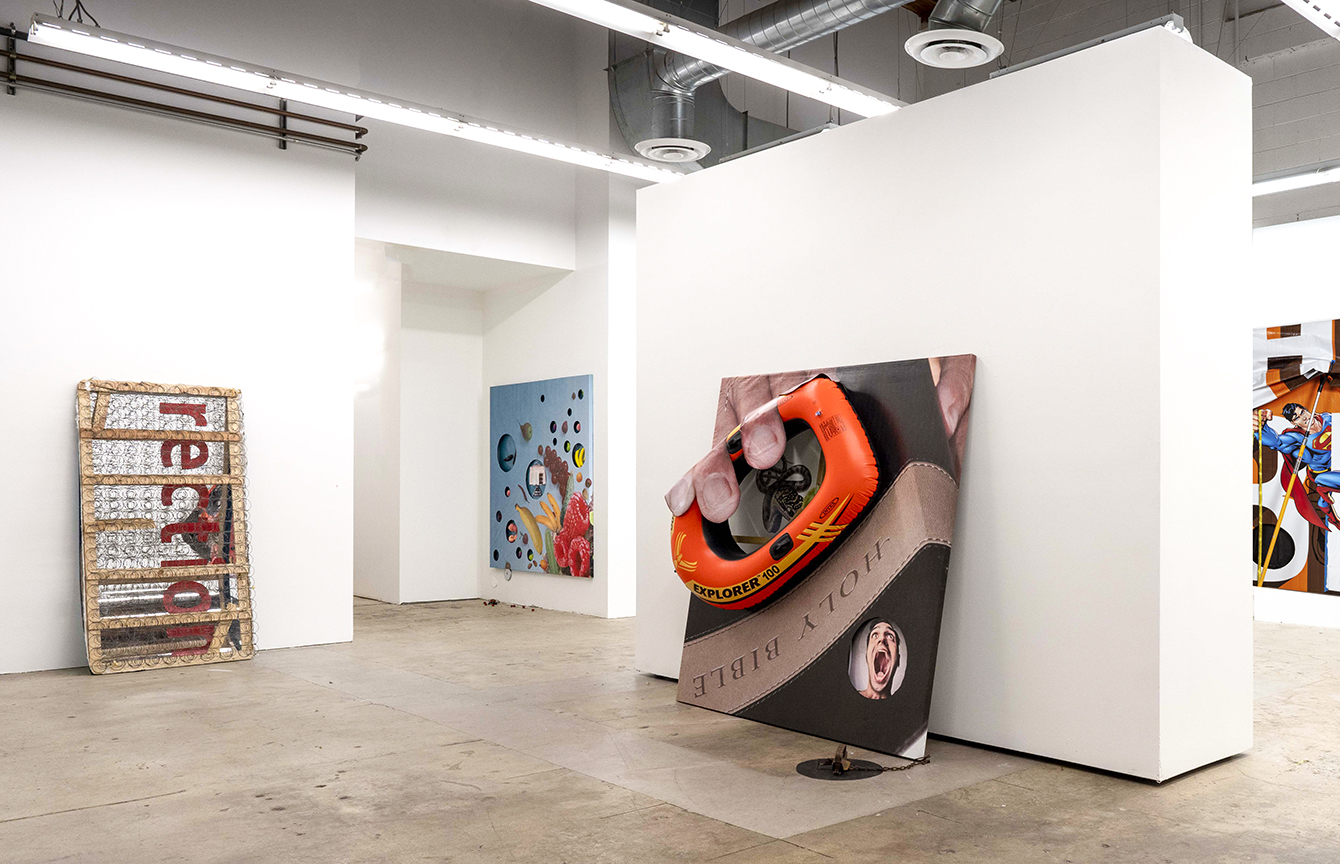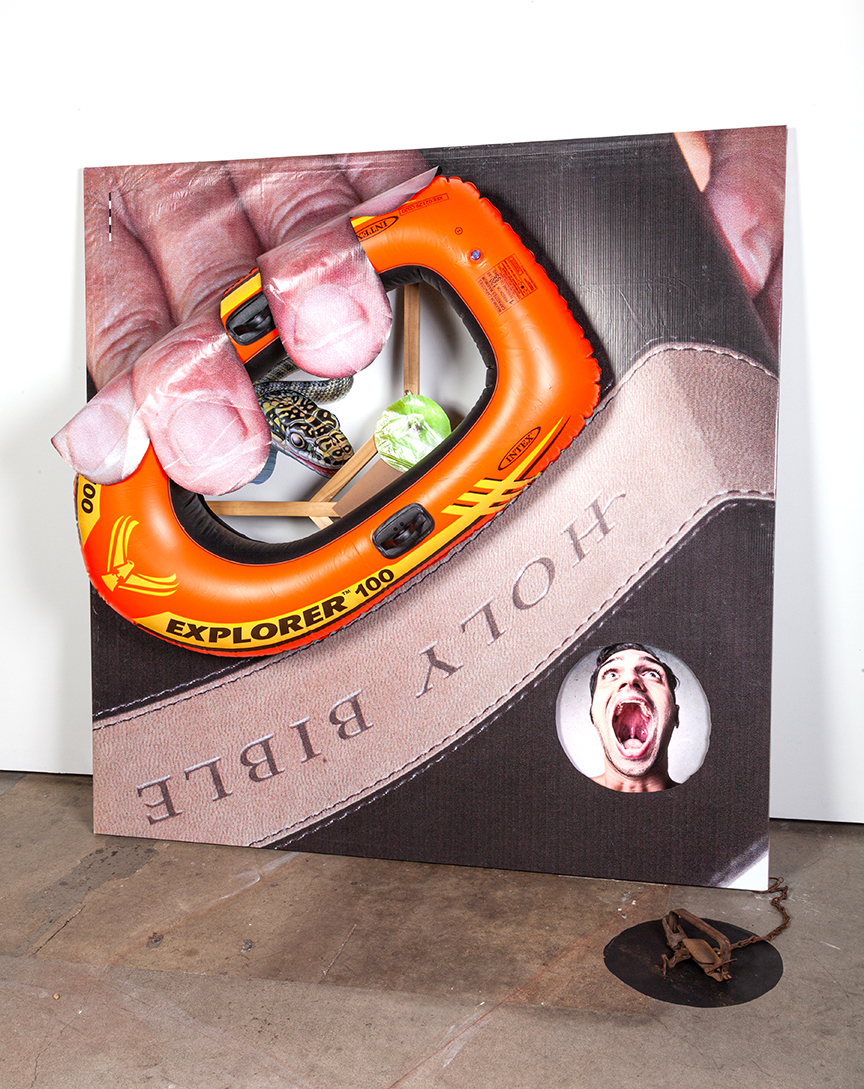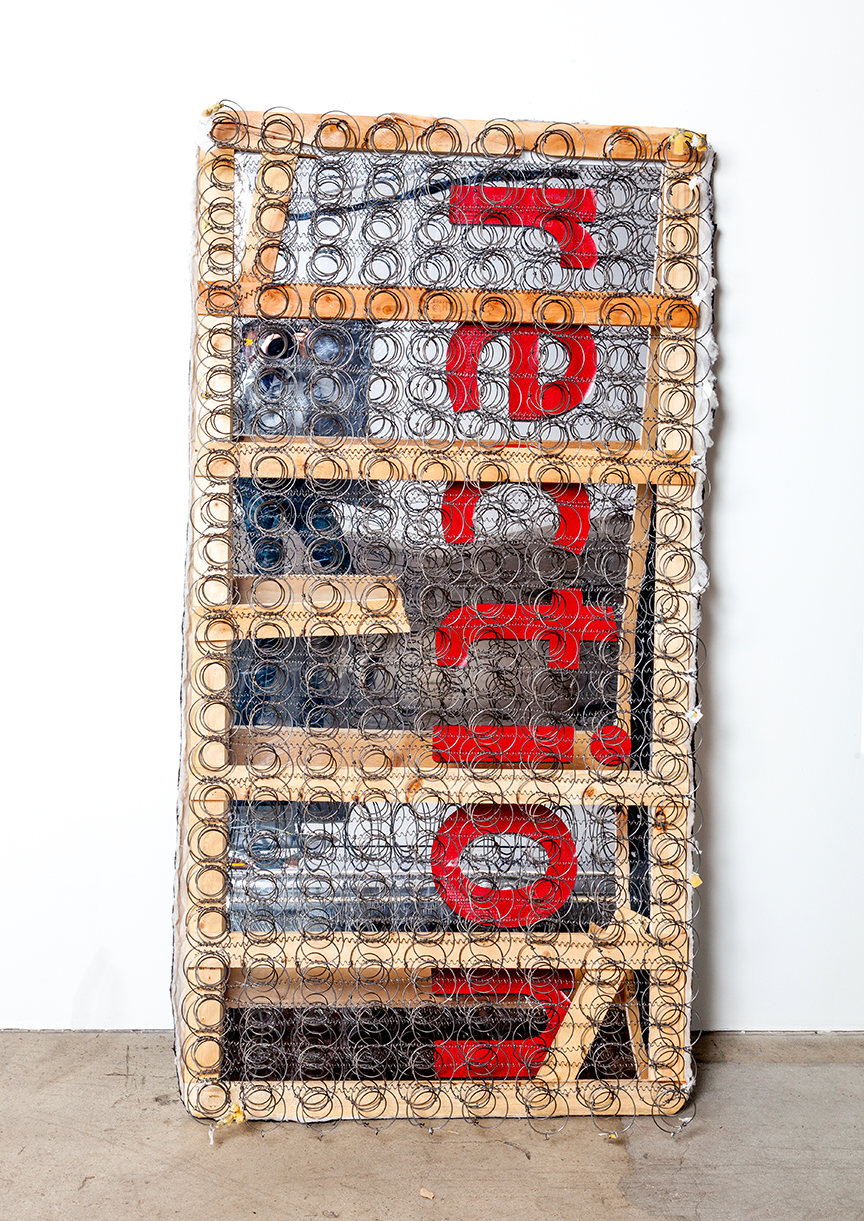
Trademarks Are Trademarks explores the space where consumer images, desire and the self collide. This practice which stems from years as a photographer contributing to the production of images in the service of advertising is now about making the commercial pictures engulfing us everywhere impotent. Can our process of looking at consumer images be subverted or disrupted away from an objective position of “for everyone and for no one” to a subjective individual experience? Is it possible to reflect a personal persona built by commercialism but apart from it? The aim in my process is to destabilize the way consumer images attempt to homogenize and commodify our desires and identities, my own included. My work sublimates the prevailing simulacra of advertising by tearing apart the remnants of consumerism – along with the signs and symbols it uses to seduce and shape our personas – and to collage the materials back together in a rebellious attempt to construct new idiomatic forms of meaning and desire.
My work is still about images but no longer about taking them. I’m constructing my work by appropriating contemporary advertising billboards. All the printed vinyl materials I’m recycling are previously used, and all offer the text and imagery of consumer goods and services. I work with whatever image and text is on the billboard itself, be it a hamburger, the texture of bricks, or the letter T. I use these images and texts as raw materials for collages, to which I add painting, drawing and found objects. I dissect, glue, paint, stretch, collage, and combine imagery from multiple billboards into one and often sculpt the vinyl itself. I slice the image or cut holes in it to reveal substructures or images behind the surface to illustrate the idea that there are hidden agendas at play behind the scenes in the production of commercial pictures. Readymade objects are combined with the billboard images as sculptural elements in order to put the images into a direct physical and subjective relationship, often a purposefully confusing one. Fragments of consumerism are made even more impotent from their commercial intentions when these spatial relationships and juxtapositions are constructed, and new narratives are created.
Large billboard images are not designed to be seen at eye level or close up. In my work the scale is intentionally distorted, the crops not true and the original messaging purposefully made illegible. I want the viewer to enter into the work and have it envelop them when confronted by it, so I use segments of the billboards roughly the size of the body in order to transform the unreal scale into a real and approachable one. The viewer is forced to experience the bodily size of the work and the effect is immediately disorientating. Our conditional perception of the content, usually seen from afar, is changed. This Derealization affects both the subject and the objects of experience, such that their sense of identity, constancy, and substance is upset or dissolved. Only pixelated textures, fragments of massive objects, and broken pieces of text remain to envelop the body and convey my desires.

